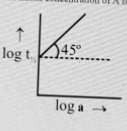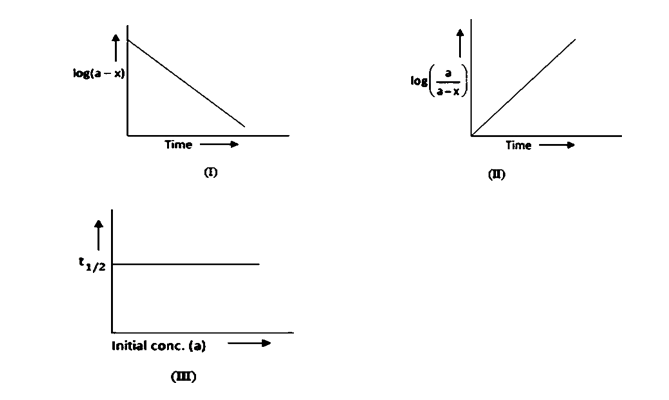For an elementary reaction: nA→ Product Find the value of n: [where a is initial] amount of A and x is amount reacted in tine t]
![For an elementary reaction: nA rarr Product Find the value of n: [where a is initial] amount of A and x is amount reacted in tine t]](https://d10lpgp6xz60nq.cloudfront.net/physics_images/GRB_PHY_CHM_P2_V03_QB_C13_E01_174_Q01.png)
2
−3
3
1
The correct Answer is:A
Topper's Solved these Questions
- GRAPHICAL INTERPRETATIONBOOK - GRB PUBLICATIONCHAPTER - GRAPHICAL INTERPRETATIONEXERCISE - I.Electrochemistry
1 Videos
- GRAPHICAL INTERPRETATIONBOOK - GRB PUBLICATIONCHAPTER - GRAPHICAL INTERPRETATIONEXERCISE - Electrochemistry
9 Videos
- GRAPHICAL INTERPRETATIONBOOK - GRB PUBLICATIONCHAPTER - GRAPHICAL INTERPRETATIONEXERCISE - H. Chemical Kinetics
1 Videos
- F-BLOCK ELEMENTSBOOK - GRB PUBLICATIONCHAPTER - F-BLOCK ELEMENTSEXERCISE - Subjective type
7 Videos
- HYDROCARBON (ALIPHATIC)BOOK - GRB PUBLICATIONCHAPTER - HYDROCARBON (ALIPHATIC)EXERCISE - Previous years jee questions
28 Videos
Similar Questions
For a reaction: nA→ Product, if the rate constant and the rate of reactant are equal what is the order of the reaction?
View SolutionFor a reaction A→ Products, a plot of logt12 ,versus log a is shown in figure. If the initial concentration of A is represented by a ,the order of the reaction is:-

View Solution
Knowledge Check
The molecularity of an elementary reaction
X+2Y→Products isA1B2C3D0For a reaction: nA→ Product, if the rate constant and the rate of reactant are equal what is the order of the reaction?
A0B1C2D3An elementary reaction is given as 2P+Q→ products. If concentration of Q is kept constant and concentration of P is doubled then rate of reaction is
AdoubledBhalvedCquadrupledDremains same
Some reactions yield greater amount of products on heating while some others give lesser amount. Why ?
View SolutionWhich of the following is/are correct for the first order reaction ? (a is initial concentration of reactant, x is concentration of the reactant reacted and t is time)

View SolutionWhen a certain radioactive elements decays, the amount at any time t can be calculated using the function E(t)=ae−t500 , where a is the original amound an t is the elapsed time in year.How many years would it take for an initial amount of 250 miligrams of this element to decay to 100 miligrams?
View SolutionFor a first-order reaction of the type
nA → product
where initial concentration of A is 'a' moles/litre. The correct expression for the rate constant or half-life is
View SolutionWhich of the following graphs is not for zero order reaction?
View Solution
